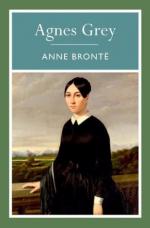|
This section contains 6,935 words (approx. 24 pages at 300 words per page) |

|
SOURCE: " Agnes Grey: 'all true histories contain instruction,"' in Anne Brontë: The Other One, Macmillan, 1989, pp. 96-117.
In the following essay, Langland characterizes Anges Grey as a novel of female development "that both draws from a tradition of other such novels and departs significantly from it."
Agnes Grey tells a story of female development. What makes it distinctive from previous novels by women with female protagonists is that Agnes more closely follows a male pattern of development. The classic starting point for the male Bildungsroman, or novel of development, is the protagonist's dissatisfaction with home and a corollary desire to gain experience in the larger world. While Agnes cannot simply take to the open road like a male hero, she nonetheless longs 'to see a little more of the world' (AG [Agnes Grey, Everyman's Library (London and Melbourne, Dent, 1958)] 4). She resists being kept the 'child and...
|
This section contains 6,935 words (approx. 24 pages at 300 words per page) |

|


